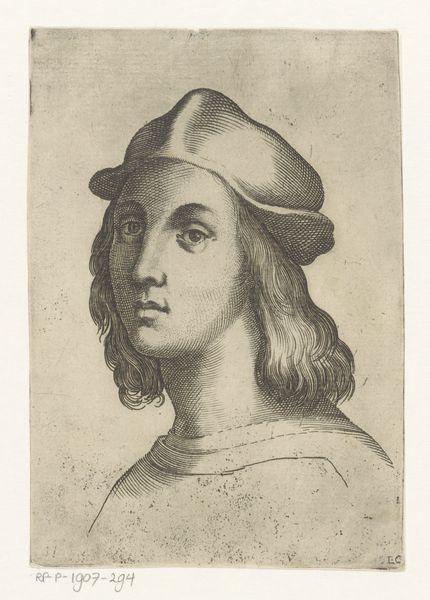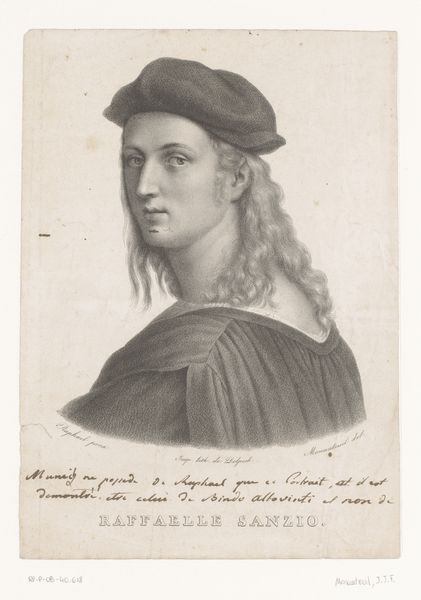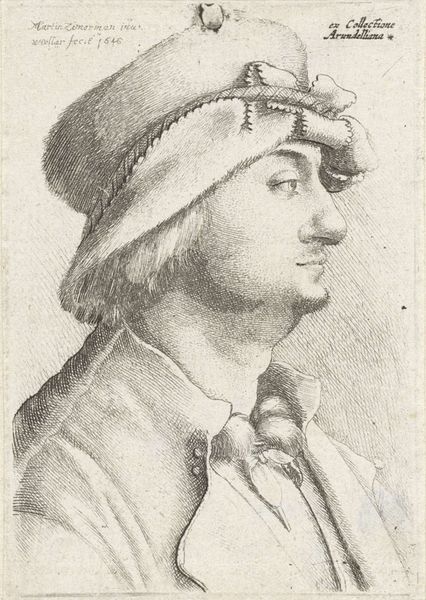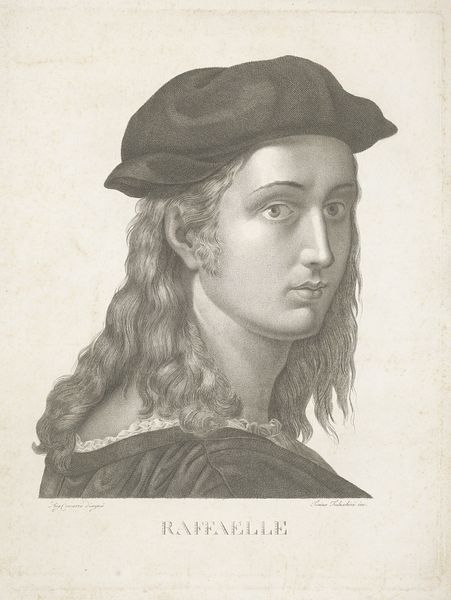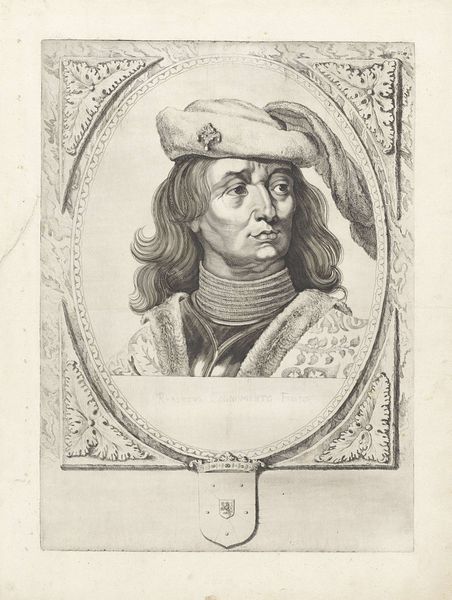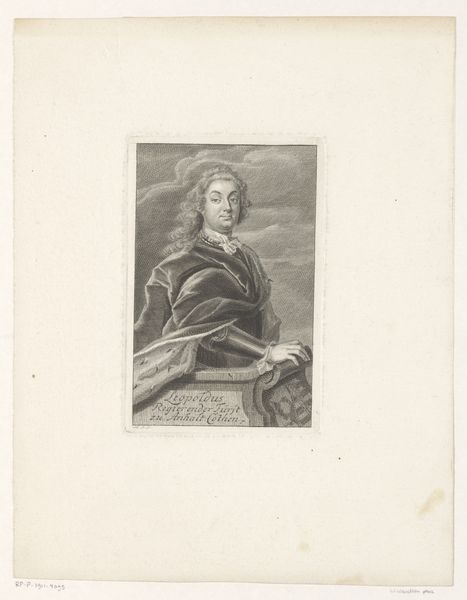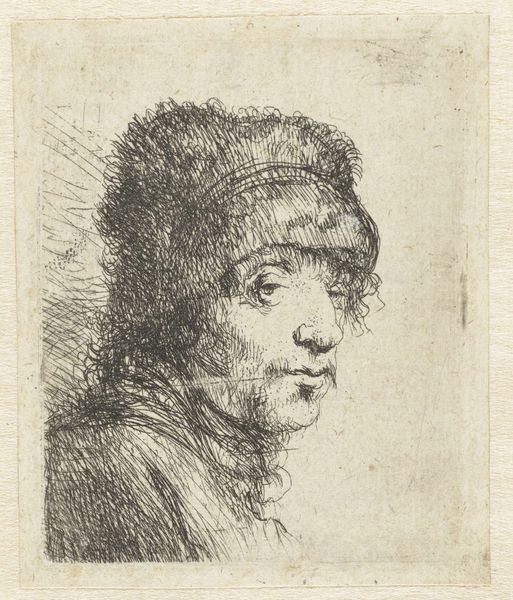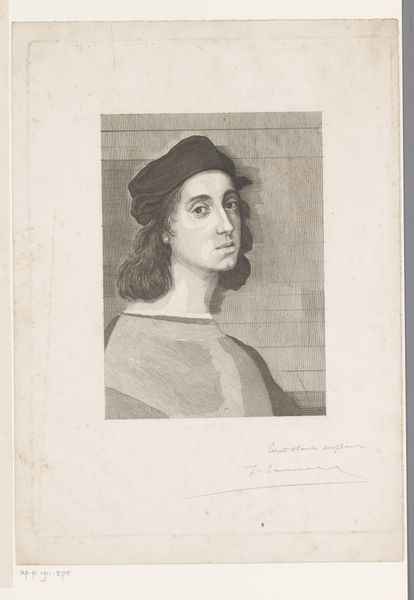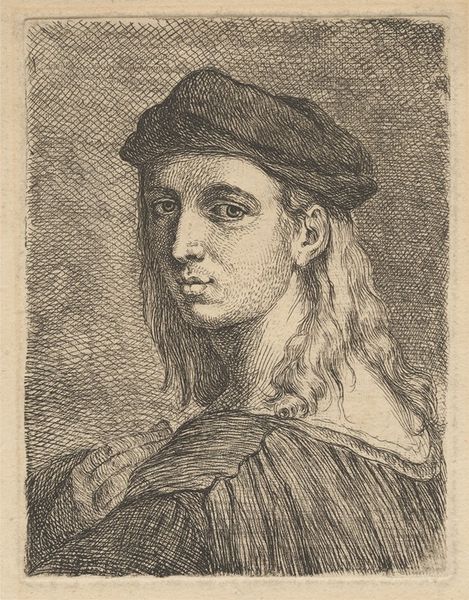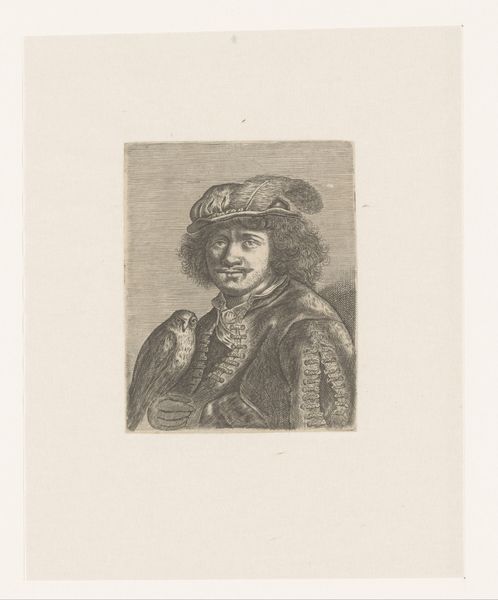
drawing, graphite
#
portrait
#
drawing
#
pencil drawing
#
graphite
#
realism
Dimensions: height 110 mm, width 75 mm
Copyright: Rijks Museum: Open Domain
This is Heinrich Maria von Hess’s "Portret van Rafaël", made with etching, a printmaking technique that dates back to the 1500s. Von Hess would have covered a metal plate with a waxy, acid-resistant ground, into which he scratched his image. He then submerged the plate in acid, which bit into the metal wherever it was exposed. This process created an image that is incised, rather than raised, like in a woodcut. This method allows for incredible detail, which you can see in the fine lines of Raphael’s hair and the delicate shading of his face. But consider, too, what etching meant in the nineteenth century. It was a relatively inexpensive way to reproduce images and make them widely available. Here, Von Hess is not only paying homage to a master artist, but also participating in a larger project of cultural dissemination, bringing art to a broader audience through skilled labor. The etching medium itself becomes a means of democratizing art, challenging notions of exclusivity and celebrating the craft involved in its production.
Comments
No comments
Be the first to comment and join the conversation on the ultimate creative platform.
